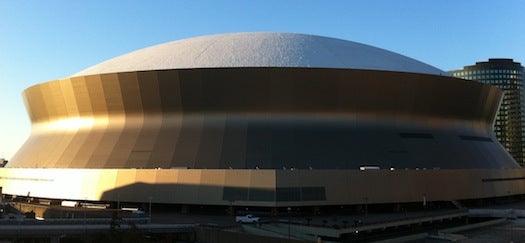FYI: What Caused The Power Outage At The Super Bowl?
And what, if anything, could’ve prevented it?

Chill, people. Beyoncé did not cause the power outage at Super Bowl XLVII. (Her gajillion-watt halftime show had a separate generator.)
What did contribute to the power outage–and the resulting 34-minute game delay-—is not entirely clear. Entergy Corporation, the utility that provides power to the Superdome, and SMG, the managing company at the stadium, released a vague joint statement, saying “a piece of equipment that is designed to monitor electrical load sensed an abnormality.” As a result, the equipment opened a circuit breaker, cutting power to parts of the Superdome to isolate the issue.
With investigation into the outage still underway, it’s hard to say whether or not the whole fiasco could have been prevented, but smart grid technology certainly could have shortened the blackout period. Smart grid technology–sensors paired with two-way digital communication between the devices in the field and a central operations system–could have led to a very brief loss of power, lasting a few seconds or less. Spectators might’ve seen little more than a flicker of the lights.
Restoring power to the Superdome meant electricians had to manually check where the fault was before rebooting electricity to the stadium. A smart grid could have digitally tested the system within seconds because the software behind it enables constant communication between the sensors in the grid, says Rob Pratt, a thought leader in smart grid technology at Pacific Northwest National Laboratory.
As for cost: Pratt speculates that installing a smart grid in a venue like the Superdome would cost anywhere from $100,000 to $1 million. Not cheap. But it’s still a lot less than what taxpayers have already spent on the Superdome: at least $471 million since Hurricane Katrina in 2005.